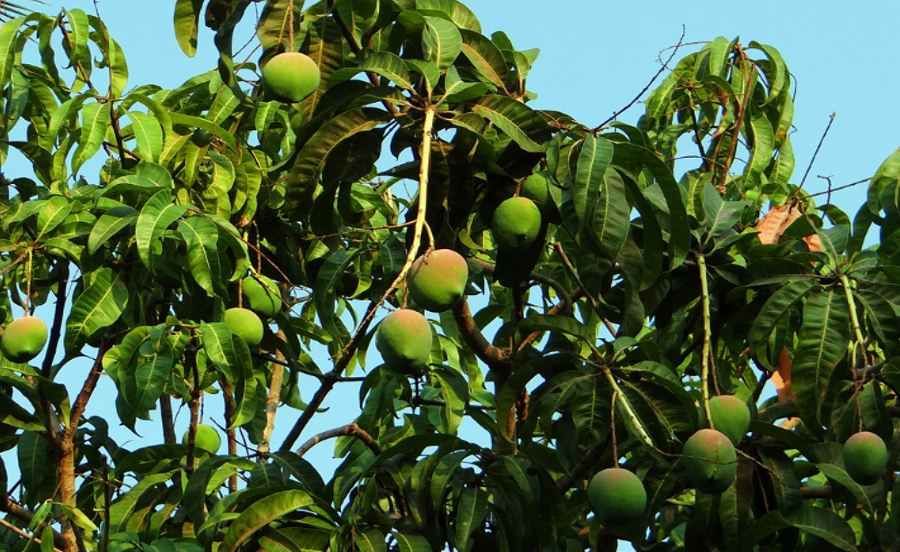Seed banks will not save more than a third of critically endangered species
Plant conservation efforts have focused on storing seeds in dedicated locations – seed banks – but recent research reveals that this goal is impossible to achieve. According to the researchers, 36 percent of the seeds. Critically endangered species cannot be stored in this way.
Projects such as the Svalbard Global Seed Vault in Norway and Kew’s Millennium Seed Bank in the UK have been set up to protect the world s plant diversity from extinction due to extreme climate change or nuclear war, but more than a third of the world’s „critically endangered” species The plants cannot be saved by freezing their seeds, the researchers warn.
Researchers from the Royal Botanic Gardens in Kew in a paper published in the „Nature Plants” for the first time The number of endangered species (e.g in which plants that cannot be preserved in seed banks. According to the publication, more than 36 percent of. species seeds „Critically Endangered” do not tolerate the freezing process, so they cannot be stored in seed banks. If no other conservation techniques are found then oak trees, mango trees, avocado trees or chestnut trees – will disappear from the face of our planet.
The 36 percent mentioned. The Millennium Seed Bank in the United Kingdom „critically endangered”. These categories were created by the International Union for Conservation of Nature and there are seven in total: extinct, extinct in the wild, critically endangered, endangered, vulnerable, near threatened and least concern. Researchers have estimated that in the „vulnerable” A similar situation applies to 35 percent of. plant seeds. In the category „endangered” It is 27 percent of the. species . In total, the problem affects 33 percent of. of all tree species trees, and as far as all plants are concerned, 8 percent of. seeds of all species plants will not survive freezing.
The above data show that the scale of plant seeds unable to be preserved in seed banks is much higher for endangered species . This issue is particularly It doesn’t apply to species in trees from moist forests in the tropics.
Currently, seed banks are the most commonly practiced method of b. conservation of plants outside their natural habitat. It’s something of an insurance policy against global plant extinction, so that rare, endemic or economically important species can grow in the future. This type of ex-situ conservation (from the Latin. The use of seed banks (e.g. off-site) is preferred for several reasons : preserves high levels of r of genetic diversity at relatively low cost in a minimal space and can be applied over relatively long periods of time.
As it turns out, however, it will not work for all seeds, and a new publication suggests that there is a huge gap in our knowledge. To estimate the scale of the problem, Sarah Wyse and John Dickie of the Royal Botanic Gardens at Kew have developed a set of models to predict the likely behaviour of species in relation to the storage of their seeds. In the analysis, the researchers stress that the goal of the Global Strategy for Plant Conservation – UN program) to conserve 75 percent of. of endangered species The goal of protecting the world’s plants outside their natural habitat by 2020 is virtually impossible.
The authors of the publication noted that alternative methods are required to achieve this goal. Perhaps this could be done using cryopreservation techniques – a form of preservation using liquid nitrogen, which ra offers a potential long-term solution for storing resistant seeds.
In seed banks, seeds are dried and frozen at minus 20 degrees Celsius. Cryopreservation involves removing the embryo from the seed and then using liquid nitrogen to freeze it at a much lower temperature of minus 196 degrees Celsius. C. However, this technique has not yet been thoroughly perfected. It sometimes happens that stored com the rocks are being damaged. Great achievements in this field have researchers from Kew’s Millennium Seed Bank. Their goal is to develop og A new protocol for bank in seeds and begin using large-scale cryopreservation.
– Ex-situ plant conservation is more important than ever. With many threats to plants, including climate change, habitat conversion and pathogen In order to protect the most important and endangered species, we need to make sure that we are doing all we can. Seed banks are effective for some species in, but not for everyone. We need to invest in other ways to protect resistant seeds. We need a greater international effort to understand and apply alternative techniques, such as cryopreservation, which hich could potentially protect many other species in front of extinction – said John Dickie of Kew's Millennium Seed Bank, one of the co the author of in a publication.
